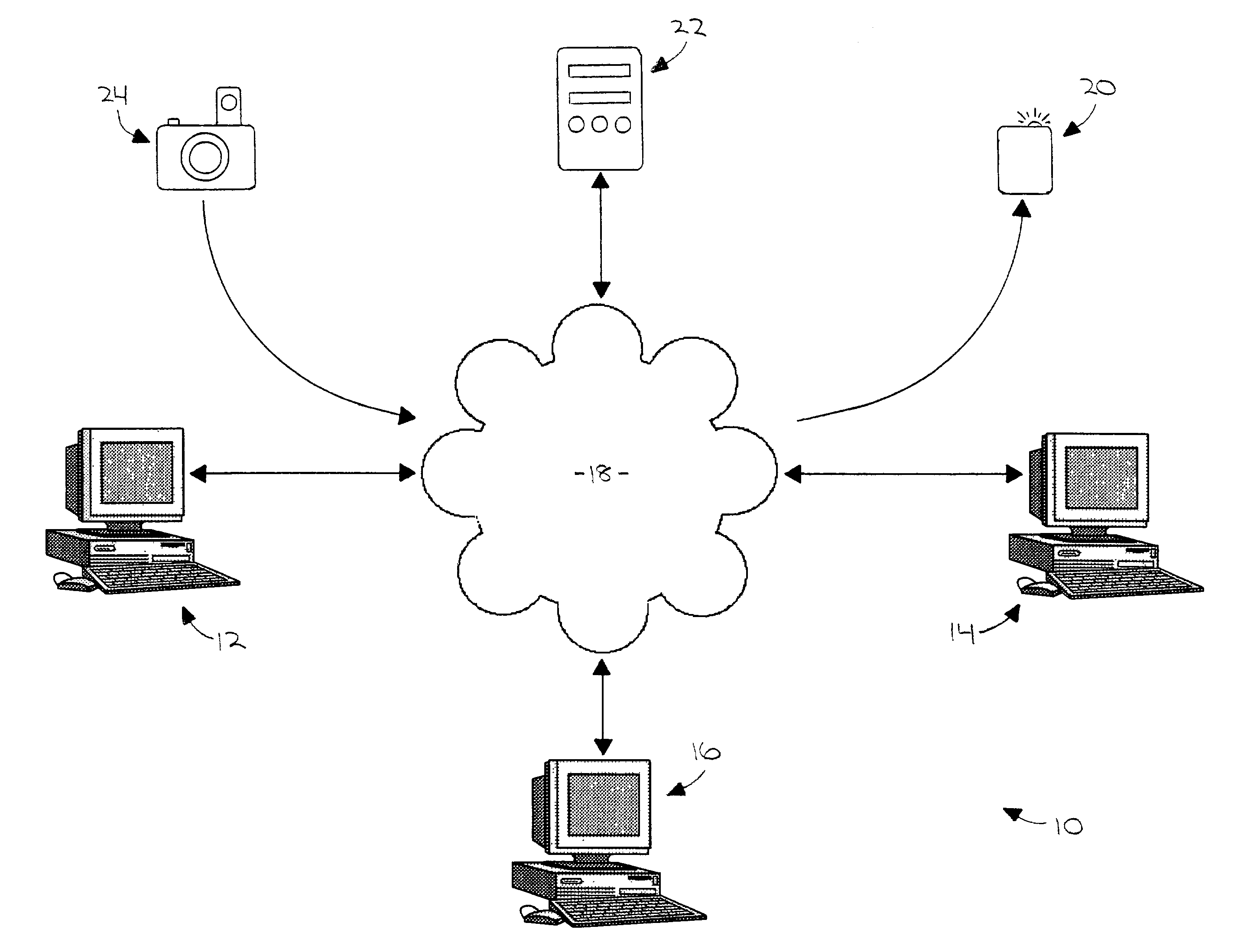Method of facilitating access to remote health-related services, practitioners, and information
a technology of remote health care and access, applied in the field of facilitating access to remote health care services, practitioners, and information, can solve the problems of inherently extremely limited information transmission ability, substantially inefficient use of remote practitioner's time, and the inability of remote practitioners to have access to all needed information
- Summary
- Abstract
- Description
- Claims
- Application Information
AI Technical Summary
Benefits of technology
Problems solved by technology
Method used
Image
Examples
Embodiment Construction
, below.
[0022] A preferred embodiment of the present invention is described in detail below with reference to the attached drawing figures, wherein:
[0023] FIG. 1 is a system diagram of a system adapted for implementing a preferred embodiment of the method of the present invention;
[0024] FIG. 2 is a block diagram of a plurality of databases maintained by a service provider for implementing the preferred embodiment of the method of the present invention;
[0025] FIG. 3 is a first part of a flowchart of method steps involved in performing the preferred embodiment of the method of the present invention;
[0026] FIG. 4 is a second part of the flowchart of method steps involved in performing the preferred embodiment of the method of the present invention; and
[0027] FIG. 5 is a third part of the flowchart of method steps involved in performing the preferred embodiment of the method of the present invention.
DETAILED DESCRIPTION OF A PREFERRED EMBODIMENT
[0028] Referring to the figures, a method ...
PUM
 Login to View More
Login to View More Abstract
Description
Claims
Application Information
 Login to View More
Login to View More - R&D
- Intellectual Property
- Life Sciences
- Materials
- Tech Scout
- Unparalleled Data Quality
- Higher Quality Content
- 60% Fewer Hallucinations
Browse by: Latest US Patents, China's latest patents, Technical Efficacy Thesaurus, Application Domain, Technology Topic, Popular Technical Reports.
© 2025 PatSnap. All rights reserved.Legal|Privacy policy|Modern Slavery Act Transparency Statement|Sitemap|About US| Contact US: help@patsnap.com



